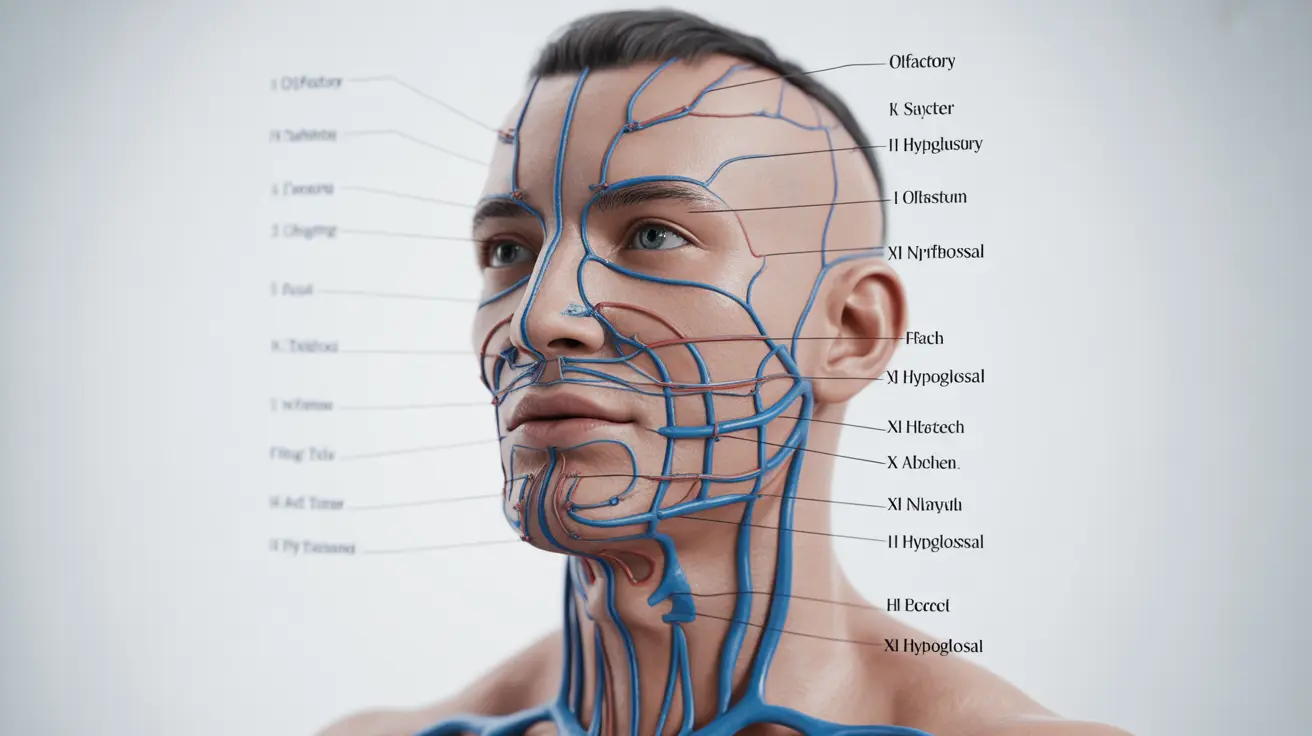The cranial nerves are essential components of the nervous system, serving as direct connections between the brain and various parts of the head, neck, and upper body. These twelve pairs of nerves play crucial roles in sensory perception, motor control, and vital physiological functions that keep our bodies functioning properly.
Understanding these neural pathways is vital for healthcare professionals and can help patients better comprehend their neurological symptoms and conditions. Each cranial nerve has specific functions and responsibilities, making them fundamental to our daily activities and overall well-being.
Overview of the Cranial Nerve System
The cranial nerves are numbered from I to XII in the order they emerge from the brain. These nerves exit directly from the brain stem or brain, unlike spinal nerves which emerge from the spinal cord. Each nerve pair serves specific functions and areas of the body, working together to coordinate various sensory and motor activities.
Classification of Cranial Nerves
Sensory Nerves
Purely sensory cranial nerves include the olfactory (I), optic (II), and vestibulocochlear (VIII) nerves. These nerves are responsible for transmitting sensory information such as smell, vision, and hearing/balance to the brain for processing.
Motor Nerves
Motor cranial nerves, including the oculomotor (III), trochlear (IV), abducens (VI), accessory (XI), and hypoglossal (XII) nerves, control various muscle movements in the head and neck region. These nerves are crucial for eye movement, facial expressions, and tongue control.
Mixed Nerves
Mixed cranial nerves, such as the trigeminal (V), facial (VII), glossopharyngeal (IX), and vagus (X) nerves, carry both sensory and motor signals. They serve multiple functions, including taste sensation, facial movements, and regulation of internal organs.
Common Cranial Nerve Disorders
Cranial nerve disorders can manifest in various ways, depending on which nerve is affected. Common conditions include:
- Bell's palsy (facial nerve dysfunction)
- Trigeminal neuralgia (severe facial pain)
- Acoustic neuroma (affecting hearing and balance)
- Optic neuritis (inflammation of the optic nerve)
Diagnostic Approaches
Diagnosing cranial nerve disorders typically involves:
- Detailed neurological examination
- Imaging studies (MRI, CT scans)
- Nerve conduction studies
- Blood tests to identify underlying conditions
- Specialized sensory testing
Treatment Options
Treatment for cranial nerve disorders varies based on the underlying cause and may include:
- Medications for pain management and inflammation
- Physical therapy
- Surgical intervention when necessary
- Alternative therapies for symptom management
- Regular monitoring and follow-up care
Frequently Asked Questions
What are the main functions of each of the 12 cranial nerves?
Each cranial nerve serves specific functions: I (smell), II (vision), III, IV, and VI (eye movement), V (facial sensation and chewing), VII (facial expression and taste), VIII (hearing and balance), IX (throat sensation and taste), X (internal organ function), XI (neck muscle control), and XII (tongue movement).
What symptoms indicate damage or dysfunction in cranial nerves?
Symptoms can include vision problems, facial paralysis, difficulty swallowing, loss of smell or taste, hearing problems, dizziness, and speech difficulties. The specific symptoms depend on which nerve is affected.
How are cranial nerve disorders diagnosed and treated?
Diagnosis involves neurological examinations, imaging studies, and specialized tests. Treatment options range from medication and physical therapy to surgery, depending on the underlying cause and severity of the condition.
What causes cranial nerve disorders and how can they be prevented?
Causes include trauma, infections, tumors, autoimmune conditions, and certain diseases like diabetes. Prevention focuses on managing underlying health conditions, protecting against head injuries, and maintaining overall health through lifestyle choices.
How do sensory, motor, and mixed cranial nerves differ in their roles?
Sensory nerves transmit information from sense organs to the brain, motor nerves control muscle movements, and mixed nerves perform both functions. This classification helps understand their specific roles in body function and potential symptoms when damaged.




